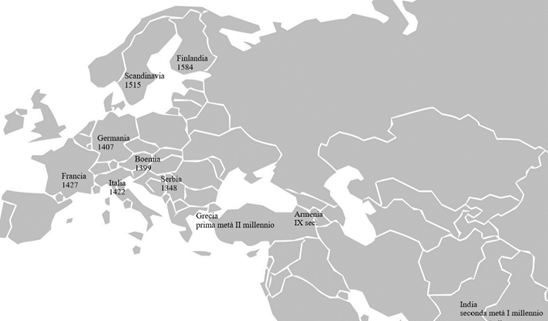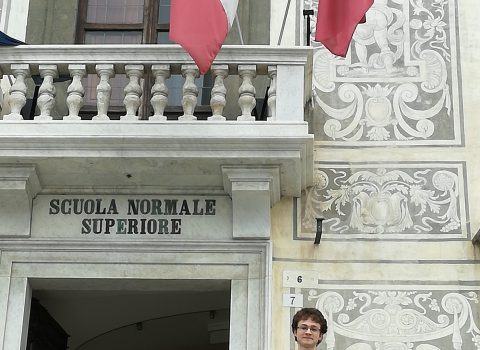
Lexical change: interlinguistic approaches
If for the past few years we have been using the words fitness or meeting in Italian, it is because language is constantly changing, and the adoption of borrowings is an entirely normal occurrence. However, some words seem to resist change more than others-some research tries to understand why.
Studies of the world’s languages explain that none has ever developed completely independently of others, nor are there speakers who are able to master only one of their varieties. In contrast, humans are polyglot animals by nature: our brains appear biologically predisposed to the acquisition and use of multiple languages (and more than one of their varieties). Cases of monolingualism, as with Icelandic among modern languages, are rare and can be linked to historical or ideological reasons.
This co-presence of multiple languages in the head of the same speaker, say a native Italian speaker, can lead to the introduction of a lexical “tile” from another language, such as English. The bilingual Italian-English speaker has both words with their meanings at their disposal, and therefore can use the English one within the Italian system: for example, using the word “fitness” with a friend (ed. instead of the more traditional Italian word). And the friend, who does not speak English, may like what appears to be a substitute for the old Italian word, so much so that he or she starts using it with the same meaning with other friends. This is the mechanism – to tell the truth, not entirely clear in its unfolding as of yet – by which borrowings from other languages are adopted and spread, which, of course, can also concern terms that do not find an Italian correspondent (as in the case of computer).
An interesting fact observed in many languages is that not all words are equally susceptible to change. In the past, it has been noted that those belonging to some semantic areas show significant retention over those belonging to others: for example, in Native American languages, borrowings of words denoting living beings outnumber those pertaining to objects – even for those imported by Europeans – just as borrowings for names of animals outnumber those for plants.
More recently, attention has focused on what happens within each semantic area. Again, while some words change variably, through new creations that may also make use of borrowings, others are not replaced for a long time, sometimes for millennia.
Take, for example, the terms for kinship in English: you will notice that the words corresponding to the closest blood ties come from Old English (mother, father, sister, brother, daughter, son), while the other cases are borrowings from French (aunt, uncle, cousin, niece, nephew, grand + parents/children). As many as six vocabulary words for the kinship lexicon are preserved from Old English, despite the high rate of borrowings from French, which have penetrated the English language since the Norman conquest of the island in the 11th century.
Precisely by comparing English with two other languages characterized by a high rate of borrowings such as Maltese and Domari, an Indo-Aryan language spoken by the doms of the Middle East and related to Romani, Yaron Matras notes many similarities in the behavior of terms for kinship, going so far as to formulate the concept of “proximity” constraint. A “proximity” criterion would operate within areas of meaning, selecting and preserving over time those words that pertain to the environment in the immediate vicinity of humans: in the case of the kinship lexicon, firmly preserving those indicating blood ties (siblings, marriage, children) over the more external ones. A similar picture seems to be looming for Romani, a glottonym of coining and academic use for the language of Roma and Sinti, characterized by an extraordinary heritage in which ancient Indian, Armenian, Iranian, Greek and other languages are layered, depending on the branch of reference (e.g., the repertoire of a Lombard sinto includes elements that are mainly German, but also Slavophonic and others drawn from Italoromance dialects).

The centuries-long journey of Roma and Sinti from India to Europe has been reconstructed historically through linguistic analysis of Romani dialects. Where precisely indicated, the year corresponds to that of the first documentats attesting to the entry of Roma or Sinti groups into the country in question (data from Soravia, Giulio. 2009 Handbook of Romani language. Bologna: Bonomo and Beníšék, Michael. 2020 The historical origins of Romani. In: Matras, Yaron and Tenser, Aron, The Palgrave Handbook of Romani Language and Linguistics, pp.13-40. Cham: Palgrave Macmillan).
In particular, Andrea Scala in The Palgrave Handbook of Romani Language and Linguistics notes, for five Romani dialects spoken in Italy, the presence of the “proximity” criterion for kinship terms, and points out that in other semantic areas a strong requirement for their preservation is cultural: words that serve an identity function, as cultural markers, strongly resist innovation, as do those that recur most frequently in discourse or that form the basis of our categorizations. These considerations take on even greater relevance if we consider that similar behavior towards resistance to change is observed in the various Romani dialects, which nowadays have become different systems, separated one from another for several centuries, and at the same time linked by a common path and origin. This track has hardly been explored, but can also be beaten with the help of some database systems accessible on the web today, for example in the dedicated sites of the Universities of Manchester and Graz.



